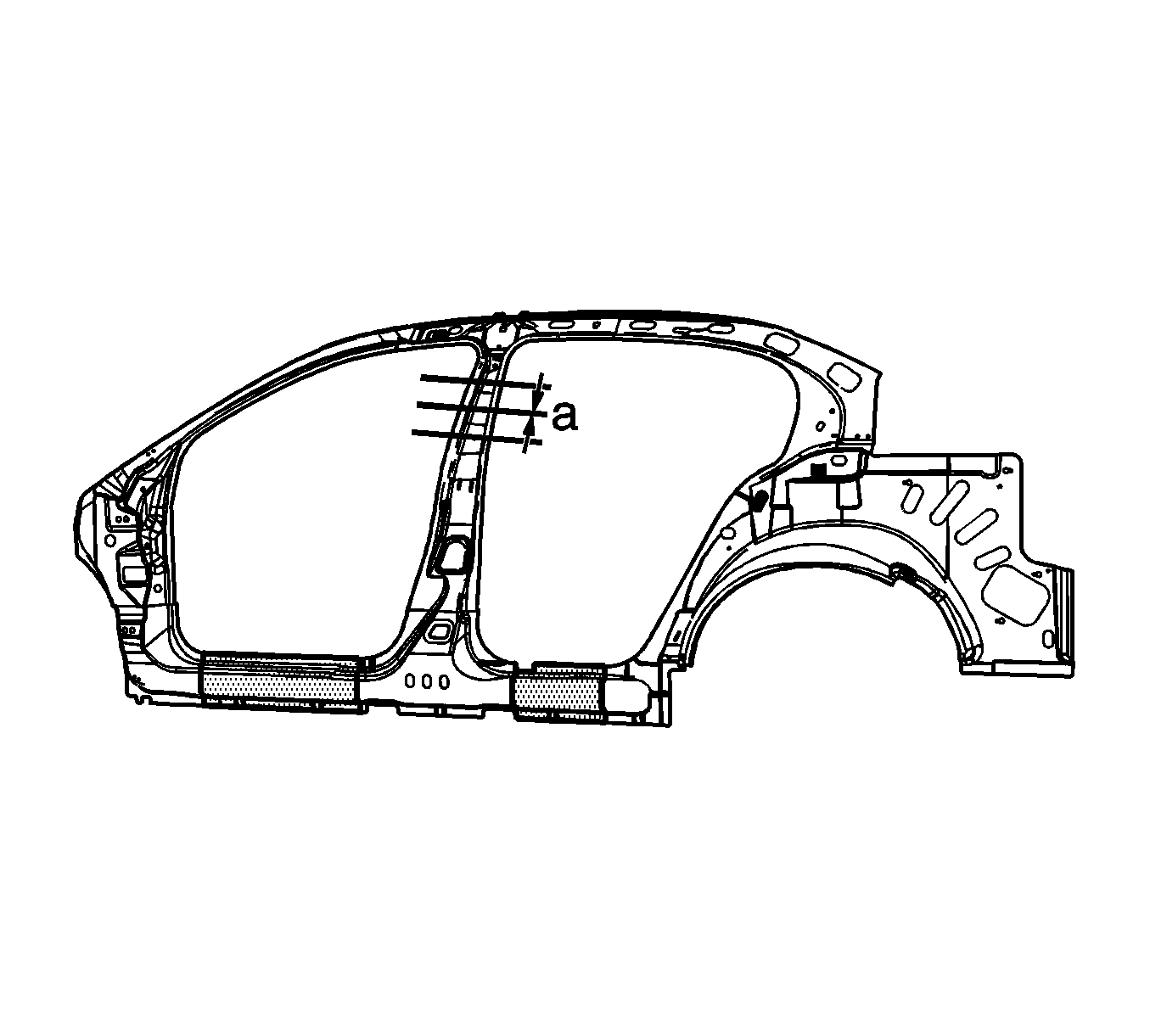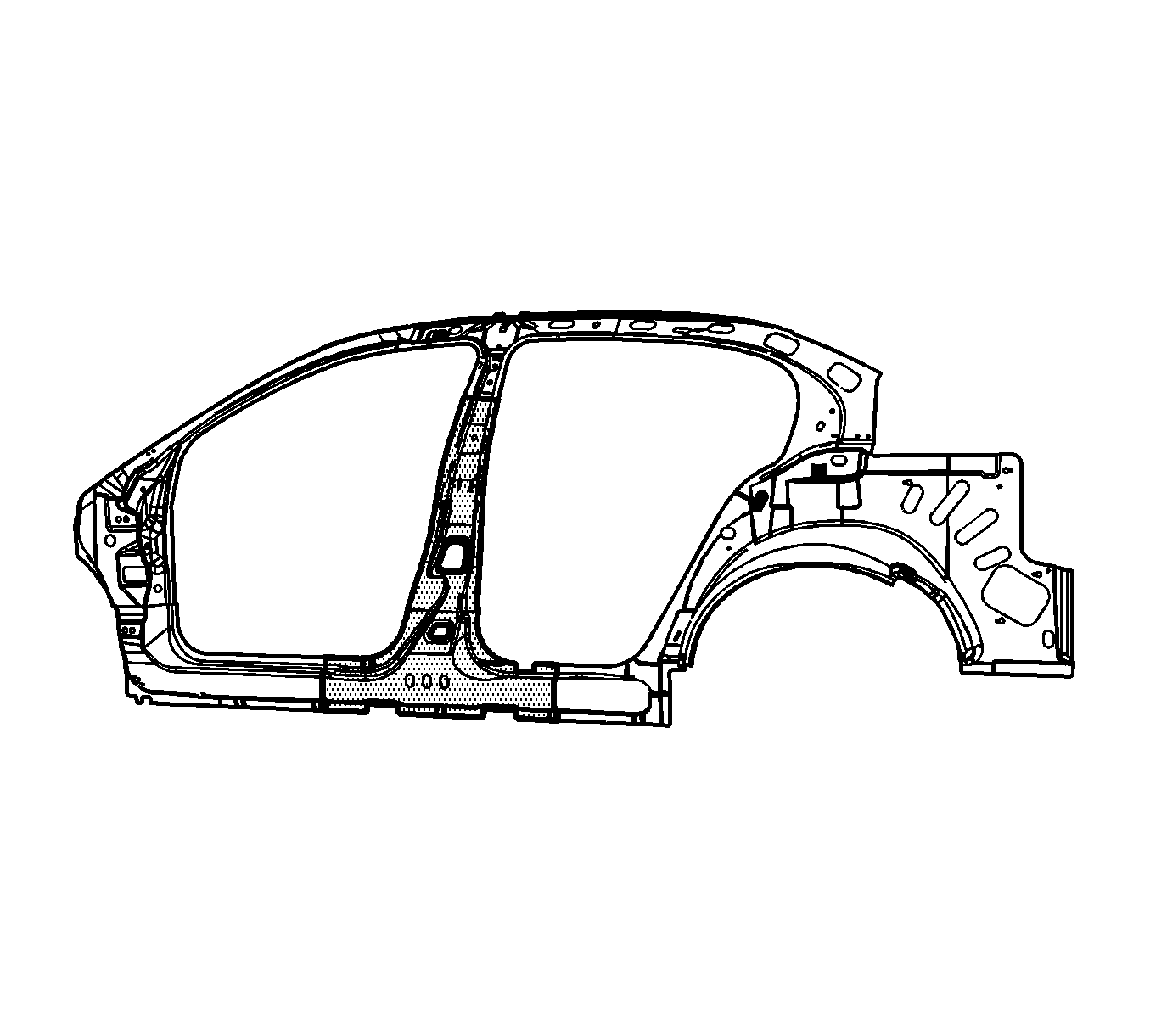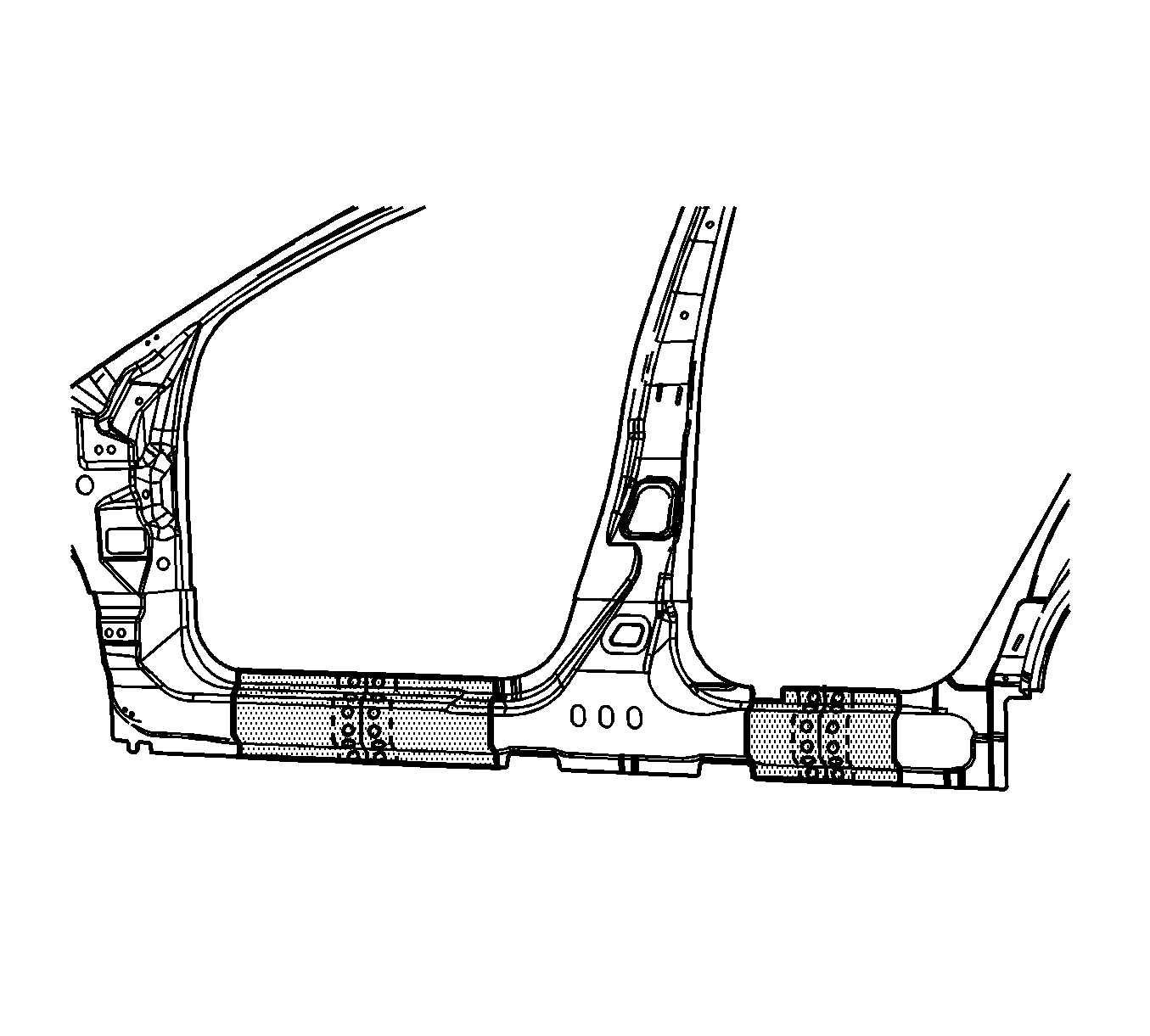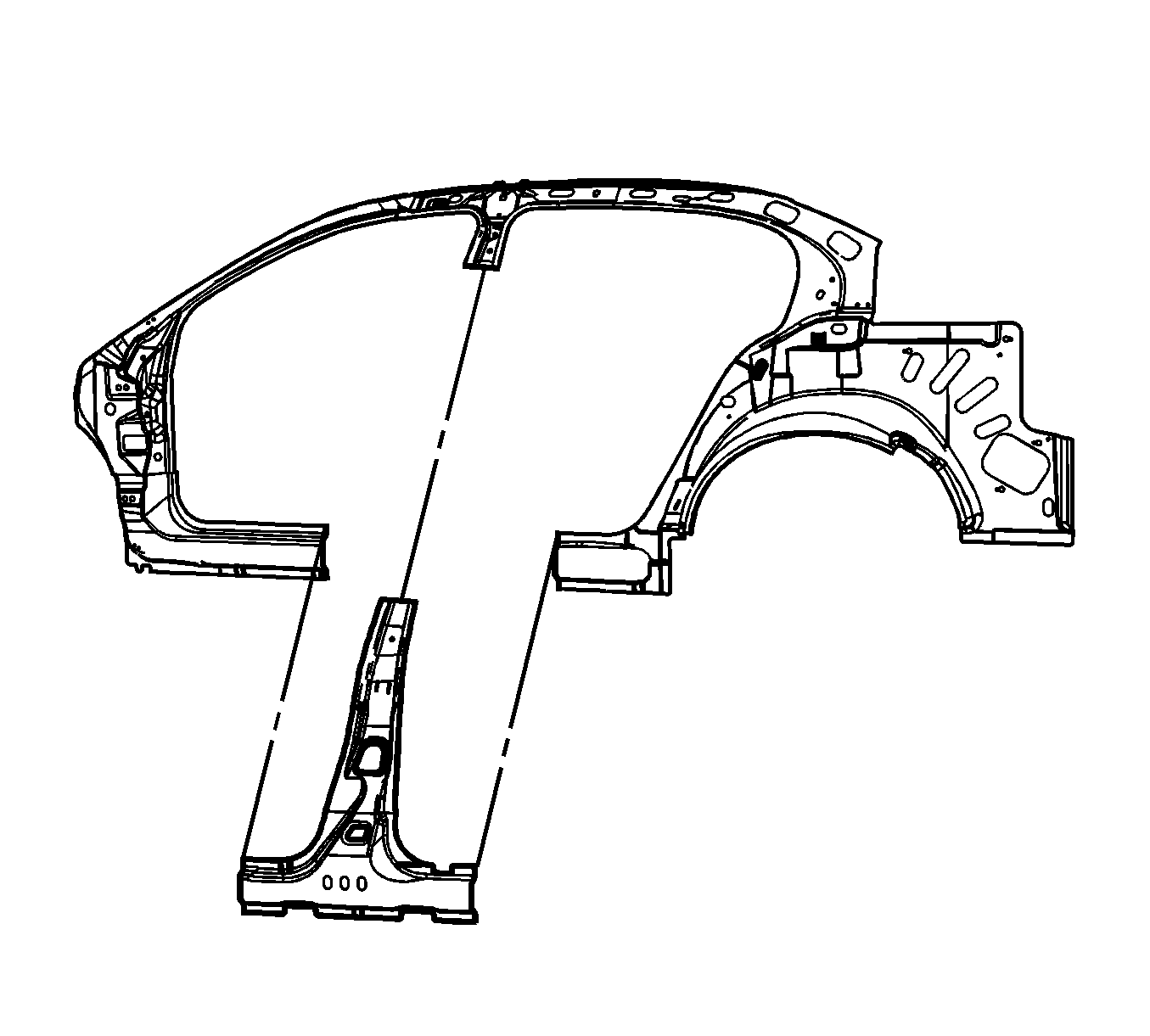For 1990-2009 cars only
Removal Procedure
- The body side inner panel is available in one piece. Sectioning must take place in specified areas only.
- Disable the SIR system. Refer to SIR Disabling and Enabling in SIR.
- Disconnect the negative battery cable. Refer to Battery Negative Cable Disconnection and Connection in Engine Electrical.
- Remove the sealers and anti-corrosion materials from the repair area, as necessary and note their location. Refer to Anti-Corrosion Treatment and Repair in Paint and Coatings.
- Repair as much of the damaged area as possible. Refer to Dimensions - Body .
- At the center pillar, locate the top shoulder belt attachment holes (a).
- Find the center point between the holes for the shoulder belt anchor bracket nut. Scribe a line. This is the cut line.
- Lay out the cut lines in the rocker panel areas.
- Cut the panel where the lay out line was scribed.
- Cut the panel at the rocker panel area where sectioning is to be performed, within the straight sections only.
- Locate and drill out all factory welds. Note the number and location of welds for installation of the service part.
- Remove the damaged center pillar.
Caution: Refer to Approved Equipment for Collision Repair Caution in the Preface section.
Caution: Sectioning should be performed only in the recommended areas. Failure to do so may compromise the structural integrity of the vehicle and cause personal injury if the vehicle is in a collision.
Remove all related panels and components.



Important: Sectioning procedures can only take place in the straight areas of the inner body side panel.
Important: Place the cut lines between the tangens of the front lower and the rear lower door opening radii.


Installation Procedure
- Cut the outer center pillar in corresponding locations to fit the remaining original panel. The sectioning joint should be trimmed to allow a gap of 1½ times the metal thickness at the sectioning joint.
- In all the rocker panel areas, create a 100 mm (4 in) backing plate from the unused portion of the service part. Trim the backing plates as necessary to fit behind the sectioning joint.
- In the upper inner center pillar area, cut a 50 mm (4 in) backing plate from the unused portion of the service part trim as necessary.
- Drill 8 mm (5/16 in) along the sectioning cuts on the remaining original part. Locate these holes 13 mm (½ in) from the edge of the part and spaced 40 mm (1½ in) apart.
- Drill 8 mm (5/16 in) plug weld holes in the service part as necessary in the corresponding locations noted on the original panel.
- Prepare all mating surfaces for welding as necessary.
- Apply 3M Weld-Thru Coating P/N 05916 or equivalent to all mating surfaces.
- Fit the backing plates into the sectioning joints for the following distances:
- Clamp the backing plates in place. Plug weld the backing plates to the vehicle half way inside the vehicle half of the sectioning joint.
- Position the inner center pillar to the vehicle using 3-dimensional measuring equipment. Clamp the pillar in place.
- Plug weld accordingly.
- To create a solid weld with minimum heat distortion, make a 25 mm (1 in) stitch weld along the seam with gaps of 25 mm (1 in). Go back and complete the stitch weld.
- Clean and prepare all of the welded surfaces.
- Apply the sealers and anti-corrosion materials to the repair area, as necessary. Refer to Anti-Corrosion Treatment and Repair in Paint and Coatings.
- Paint the repaired area. Refer to Basecoat/Clearcoat Paint Systems in Paint and Coatings.
- Install all of the related panels and components.
- Connect the negative battery cable. Refer to Battery Negative Cable Disconnection and Connection in Engine Electrical.
- Enable the SIR system. Refer to SIR Disabling and Enabling in SIR.

Important: If the location of the original plug weld holes can not be determined, space the plug weld holes every 40 mm (1½ in) apart.
| • | 100 mm (4 in) for the rocker section |
| • | 50 mm (2 in) for the center pillar section |
